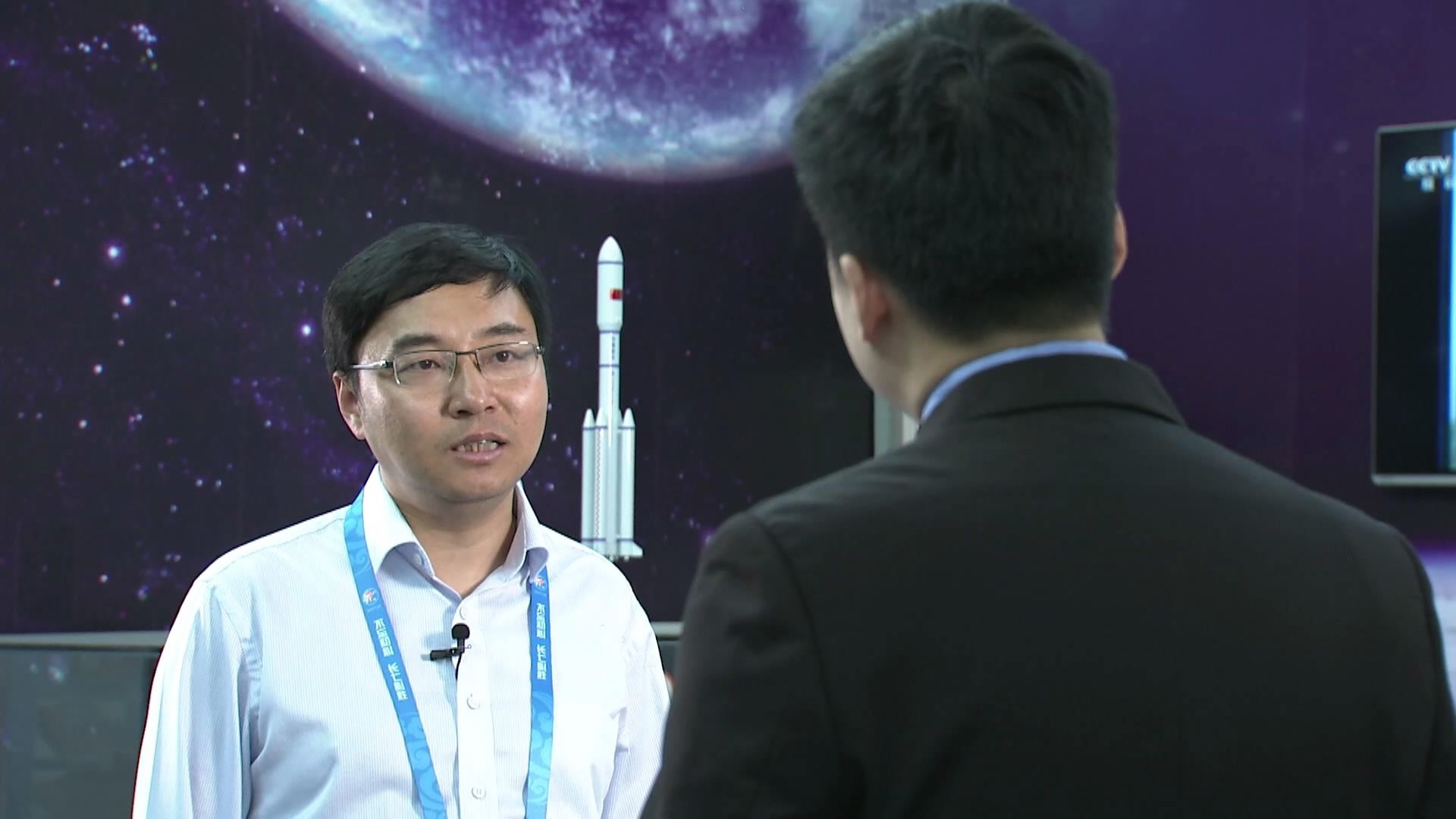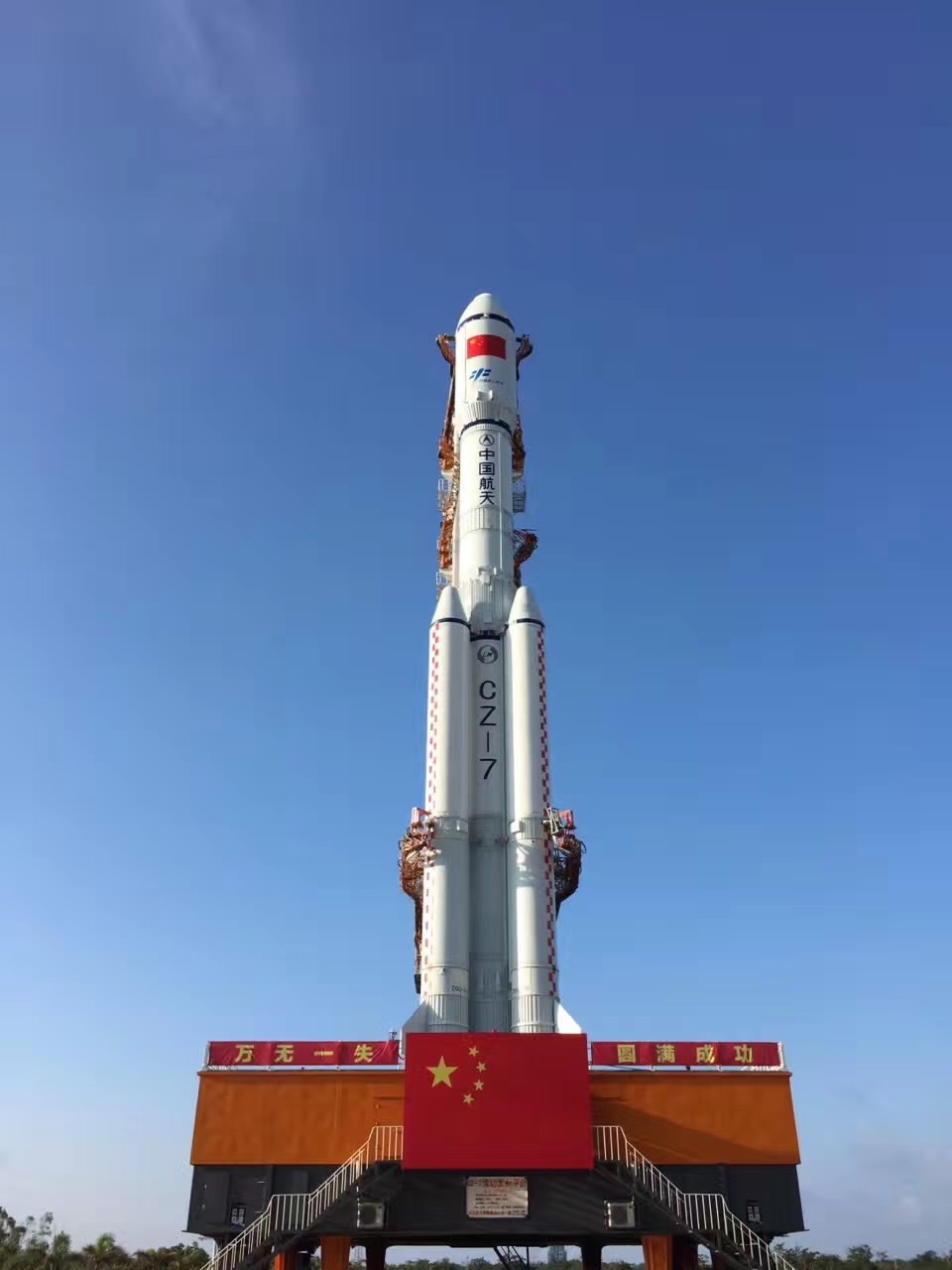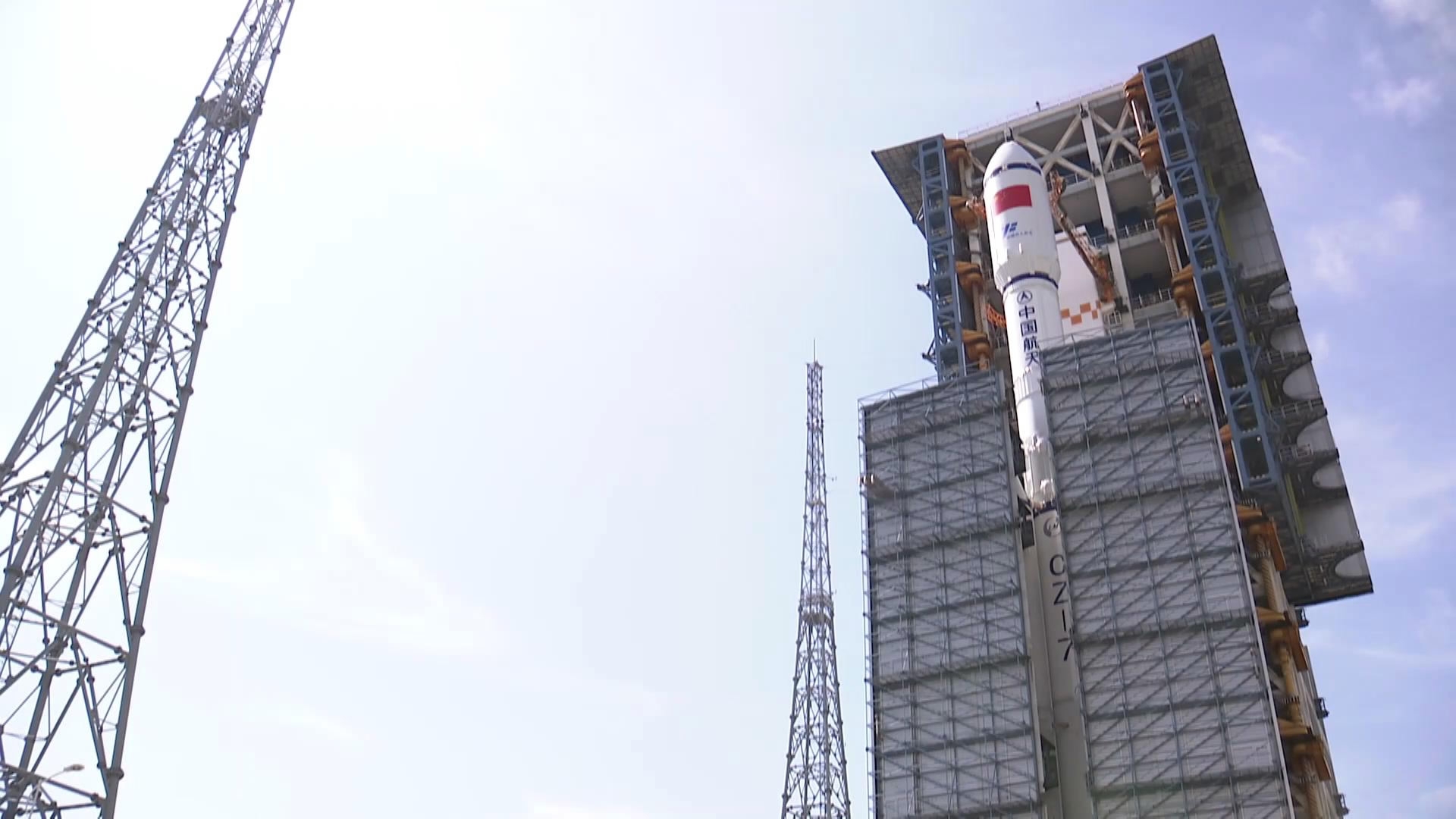By CGTN's Wu Lei
The Long March 7 carrier rocket made its maiden launch last June from the Wenchang Space Launch Center in Hainan Province.
Song Zhengyu is the Deputy Chief Designer of the Long March 7 rocket. He has been studying and researching the new generation rockets for years.
Song told CGTN in an exclusive interview that they need more launches to improve its reliability. In order to launch the Tianzhou-1, China's space agency changed some control parameters and flight timing, among other adjustments.

Song Zhengyu said 75 small adjustments related to reliability have been made on the rocket. /CGTN Photo
China’s Long March family of carrier rockets has a history going back to 1965. In the past 52 years, there have been four generations and 17 versions of the rocket.
Long March 7 is a medium-sized rocket and more environmental friendly. It can carry up to 13.5 tons to low-Earth orbit, making it a good carrier to launch cargo spacecraft and man-made satellites.

Long March 7 is regarded as the world’s most advanced and most reliable carrier for manned space missions. /CGTN Photo
Song said there are only two kinds of rockets in the world that meet the needs of both manned and cargo space missions that have been put into use. One is a Russian rocket, the other is the Long March 2F.

Long March 7 will become a main carrier for China's future space missions. /CGTN Photo
By configuring the boosters accordingly, the rocket can reach different orbits and meet different needs.
For instance, it operates within a large range of orbits, including a low-earth orbit with 13.5 tons of cargo, a sun synchronous orbit with 5.5 tons, and geosynchronous orbits with seven tons.
The Long March 7 rocket is expected to handle 70 to 80 percent of China's future launches.
Related story:
2313km










